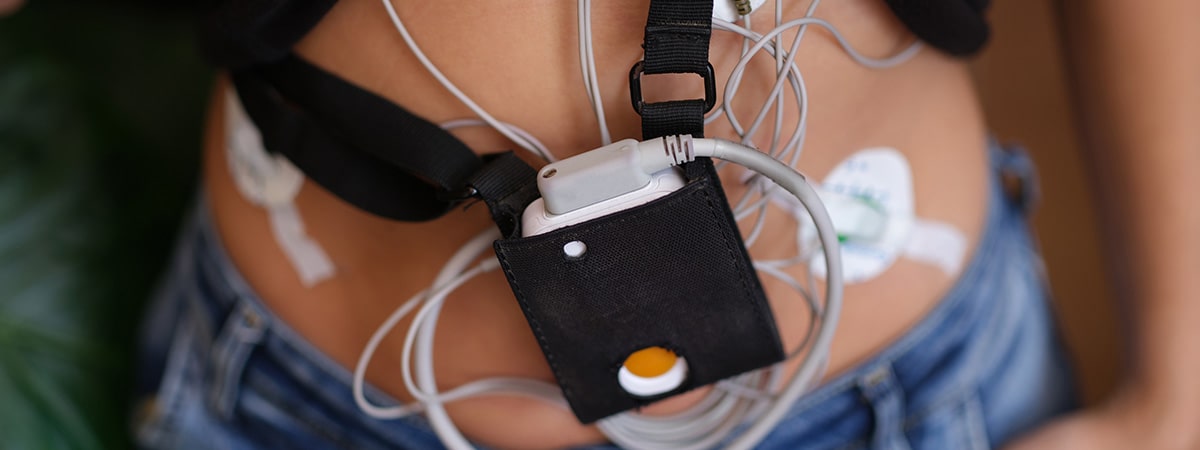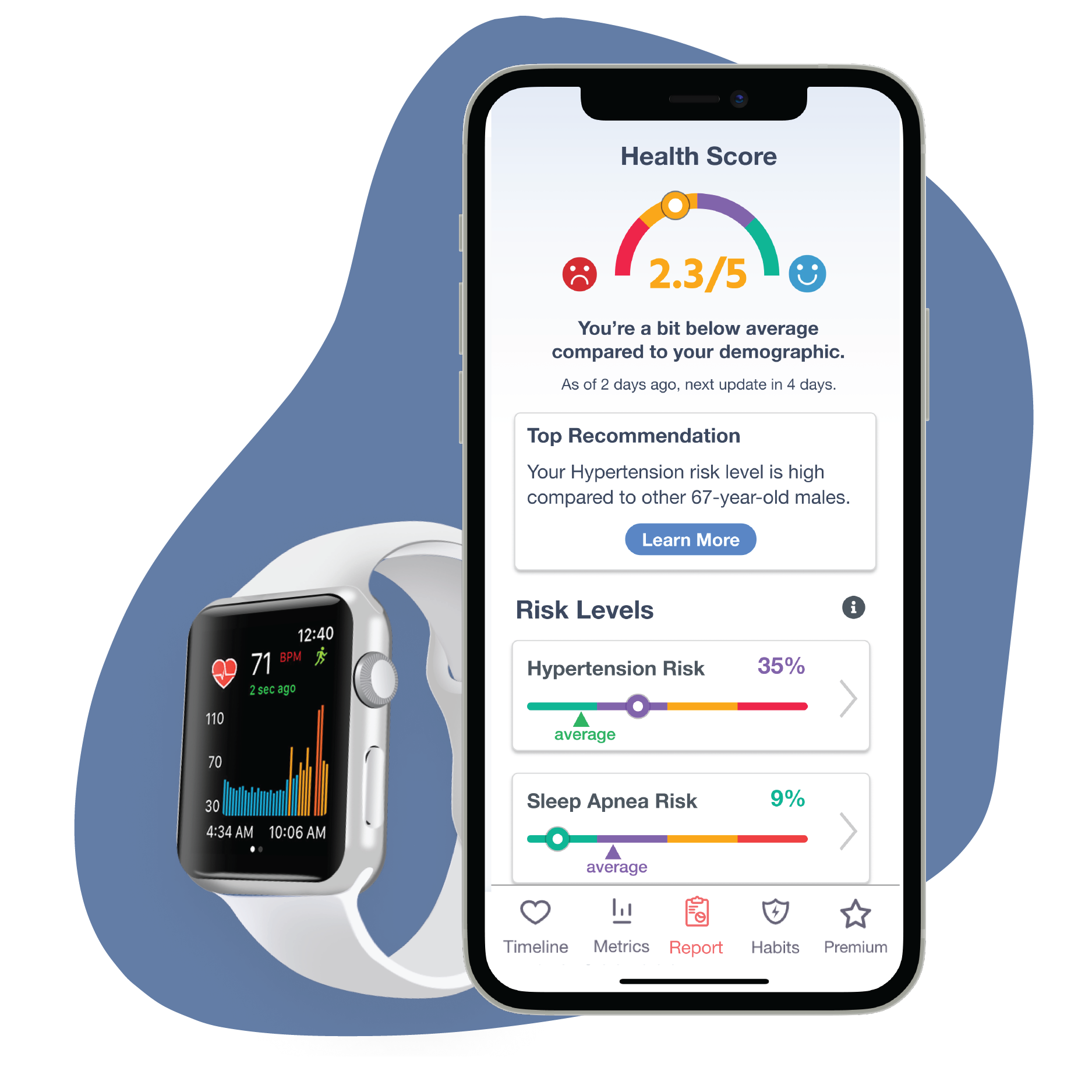Both Holter monitors and wearable devices have been found beneficial in detecting arrhythmias and heart rate abnormalities. But which device would be most beneficial overall? First, let’s look at the differences between the two:

Holter monitors are compact, portable devices that take a continuous recording of your heart’s rhythm.(5) They are equipped with electrode stickers that stick to your chest and are attached to lead wires that plug into the device. The device is worn anywhere from 24-48 hours (sometimes longer, depending on the frequency of symptoms). While the Holter monitor is worn, it captures every heartbeat the patient has, essentially giving you a 24/48-hour recording of your heart’s rhythm.
Wearing a Holter monitor is like being hooked up to a continuous ECG monitor. (Normally, ECGs only record a 10-second strip.) Wearing a Holter monitor is beneficial if you think you have a heart rhythm abnormality that can’t be caught on a wearable. Sometimes, arrhythmias are asymptomatic, so a Holter monitor would be beneficial in catching an abnormal rhythm you are not aware of. It is also easier to catch arrhythmias that are few and far between on a Holter monitor because of its precise and continuous recording. If your physician suspects that you have an arrhythmia due to symptoms such as unexplained fainting, or if you have a heart condition that increases your chance of having an arrhythmia, you would likely benefit from wearing a Holter monitor.
Pros: Offer precise heart rate monitoring, great for clinical use to detect heart rhythm conditions
Cons: Uncomfortable, less convenient, must be accessed through a physician

Heart rate monitoring
Certain smartwatches are now equipped with blood pressure monitoring, like the Samsung Galaxy Watch 4.2 This is beneficial to someone who needs to keep track of their blood pressure for reasons such as testing the efficacy of a medication, or for someone who suspects they have hypertension.
Pros: Easily accessible, comfortable wearability, cost-effective, offer powerful heart rate self-monitoring with the option to share with a doctor.
Cons: Not able to use for a full diagnosis.
While Holter monitors are highly accurate and physicians rely on them for diagnosis, there are drawbacks. Holter monitors can only be worn for a certain amount of time (normally 24-48 hours), unlike wearable devices which can be worn daily. They can also be very costly, ranging from $300 USD-$2,200USD per test, even with insurance coverage.6 The device may also need to be worn multiple times to catch an arrhythmia, causing the bill to add up that much more. The monitors can also be uncomfortable, with many patients complaining about skin irritation due to the adhesive on the electrodes. The monitor and wires can also be cumbersome, possibly getting in the way of daily activities.
On the other hand, wearables are convenient, cost-effective, and accurate. This journal7 outlines 18 studies conducted to detect atrial fibrillation, bradyarrhythmias, tachyarrhythmias, and premature contractions in 424,371 subjects using smartwatches with photoplethysmography (PPG) technology. Smartwatches were able to correctly identify arrhythmias 85% of the time, and identify patients without an arrhythmia 100% of the time.7
Another study had participants wear a Holter monitor and Garmin smartwatch simultaneously for 24 hours to screen for atrial fibrillation. Overall, smartwatches were able to detect atrial fibrillation with 89.7% accuracy.8 Atrial fibrillation (AF) beats on the wearable PPG device were determined to be AF or non-AF beats using a certain formula. Then, these labeled beats were compared to the simultaneously-worn Holter ECG for accuracy.
Additionally, smartwatches with PPG technology can cost anywhere from $40USD-$1,700USD, a drastically favorable price difference compared to a Holter monitor. Wearables generally only have to be purchased once and can last for several years, if not longer with proper care.
2 https://www.samsung.com/ca/apps/samsung-health-monitor/
4 https://cardiogram.com/do-you-really-need-10000-steps-a-day/
5 https://www.mayoclinic.org/tests-procedures/holter-monitor/about/pac-20385039
7 https://www.ncbi.nlm.nih.gov/pmc/articles/PMC8433941/
8 https://www.sciencedirect.com/science/article/pii/S000287032200028X?via%3Dihub



